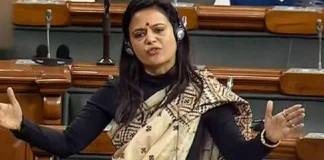Smit Shah, President of Drone Federation of India, speaks to Swarajya about how drones will become more autonomous, efficient, and integrated into our daily lives.
By Arun Kumar Das
Excerpts from the interview
Q. Give us an overview of the Drone industry in the global perspective?
A: The Indian drone industry has witnessed remarkable growth globally, becoming a transformative force across various sectors.
Drones are revolutionising industries such as agriculture, infrastructure, logistics, and public safety by increasing efficiency, saving time and reducing cost, generating high accuracy data in comparison to traditional business practices.
Moreover, the rise of advanced technologies like artificial intelligence (AI) and 5G is further propelling the potential of drones, making them smarter and more versatile.
As countries worldwide embrace drone technology, collaboration and knowledge-sharing among nations are crucial for harnessing its full potential and addressing regulatory challenges.
Q. Recently, the US has agreed to give American drones to India. How will it impact the Indian scenario?
A: The US decision to provide American drones to India is a significant development that can bolster India’s drone industry. Access to advanced drone technology will enhance India’s capabilities in defense, surveillance, and security operations.
Moreover, it will strengthen India’s drone manufacturing and research capabilities, fostering innovation and indigenous drone development.
This collaboration with the US also opens doors for strategic partnerships and international cooperation, driving the growth and global competitiveness of the Indian drone ecosystem.
Q. How do you see the growth of the Drone business in the next ten years?
A: Over the next decade, the drone business is poised for exponential growth. We anticipate a substantial increase in drone adoption across sectors, including agriculture, governance, disaster management, environmental monitoring as well as Defence and homeland security.
As technology continues to advance, drones will become more autonomous, efficient, and integrated into our daily lives.
Additionally, supportive government policies, investment in research and development, and skilled workforce development will play crucial roles in fueling the growth of the drone industry and establishing India as a global leader in drone technology.
Q. Drones are now being used for monitoring projects, delivering medicines, etc. What is the next level for it in India?
A: The future of drones in India holds immense potential. Apart from their current applications, we foresee drones playing a vital role in urban air mobility and last-mile delivery solutions.
They can revolutionise medical supply chains, enabling rapid and efficient delivery of critical medicines to remote areas.
Additionally, drones can support disaster response and relief operations, performing tasks such as search and rescue, surveillance, and post-disaster damage assessment.
Moreover, integrating drones into smart cities and transport networks will redefine urban mobility, enhancing efficiency and reducing traffic congestion.
Q. What are the constraints the industry is facing today, and how can they be addressed?
A: The government has recently liberalised the drone policy of country by publishing the Drone Rules 2021 and by notifying several other initiatives like the production linked incentive scheme for drones, import prohibition on foreign drones and liberal export policy for civil drones.
However, a lot of work has to be done for unlocking the true potential of the Indian airspace. There is a need to develop a certification scheme for beyond visual line-of-sight drones to ensure their safe operation and for unlocking last mile delivery, healthcare delivery, pipeline inspection and other use cases wherein drones need to fly over long distances.
Further, additional safety features need to be developed to address safety and security concerns that may potentially arise out of drone operations. Immediate action is also required in the domain of unmanned traffic management ecosystem to ensure that the Indian skies are ready for managing the growing traffic of drones.
Addressing these constraints requires collaborative efforts between the government, industry, and stakeholders.
Regulatory frameworks should strike a balance between safety and innovation, facilitating commercial drone operations. Public awareness campaigns can dispel misconceptions about drones and emphasise their positive impact on various sectors.
Investment in research and development will push technological boundaries, ensuring that drones remain at the forefront of innovation and safety.
Q. What are your comments on the recent developments in the export policy for drones?
A: The recent developments in the export policy for drones mark a crucial step in promoting the Indian drone industry globally. Easing restrictions on drone exports opens doors for Indian manufacturers to access international markets and establish strategic partnerships with other countries.
However, it is essential to strike a balance between export facilitation and ensuring national security by adhering to global export control norms and best practices.
Q. Can you comment on the drone startups in India? How do you see the industry flourishing or consolidating?
A: The drone startup ecosystem in India is thriving and showcases immense innovation and potential. These startups are driving the development of cutting-edge drone technologies, applications, and services.
As the industry matures, we may witness some consolidation, where successful startups merge or collaborate to leverage their strengths and expand their market reach.
At the same time, the growing demand for drones across various sectors will continue to attract new players and foster healthy competition, promoting innovation and efficiency in the Indian drone industry.
The future looks promising, with drone startups playing a significant role in shaping India’s journey towards becoming a global drone hub.
This article first appeared in www.swarajyamag.com and it belongs to them.












